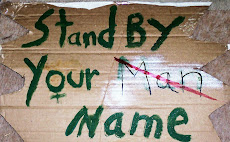I have long been skeptical of the claim that women having heart attacks “present differently” than do men. Could it not simply be the case that men tend to ignore their symptoms until a later stage? In other words, might a man experiencing back pain, fatigue, weakness, and nausea brush it off as a momentary discomfort; and not until the stereotypical symptoms set in — chest pressure, arm pain radiating to neck and jaw — seek help?
Or the reverse: If a woman experiencing back pain, fatigue, weakness, and nausea were to wait — as men typically do — might she also present with the stereotypical symptoms? I predict that as awareness of heart attack symptoms grows in the lay population, first responders are going to be increasingly seeing men present (sooner) with what physicians now refer to as typically female symptoms. Otherwise there should be a physiological explanation for the differences in symptoms, and I seen none offered, leading me to suspect that gender medicine is simply another manifestation of the blue-and-pink backlash. In fact, in the (admittedly few) articles I’ve read on the subject, the heart attack example is the only one ever cited. So we need an entire new specialty based on a single example, which might itself be flawed? Are not gynecology, obstetrics, and urology enough?
Seguing into a less cut-and-dried area of gender, I finally have a guess as to why Israeli women dress so revealingly, even when inappropriate, i.e., professional and employment situations: They’re hot! “Um, OK,” I can hear you saying. “Yes…so what?” Well, perhaps they’d be more willing to cover up if they could find decent cotton clothing. Ever looked for cotton clothing in Israel? Sure. It’s here — for double and triple the price of synthetics. While many are disturbed by the fact that whole grain flour costs more than white and granola costs more than Sugar Bombs, few seem perturbed about the equivalent situation in clothing.
In order to find 100% cotton elastic pants with pockets, I went all the way to the wholesale district in Tel Aviv, where Ofnát Sabába was willing to sell me one pair, for cash only, in their largest size, which they call Xtra Large. So what’s a woman larger than I to do? The largest size cotton tops at Fox are size 3s, which is barely a medium; 2 is small; and 1 is micro-human. I finally went to Onót, a plus-size chain, where I found a size that doesn’t cover me on top as well as I’d like, but at least it fits me. I’m now officially a plus-size woman (I’m 5’1” and weigh 135 lbs.), I live in a desert country, and can’t find decent cotton clothing that's not white yoga pants. Is this not absurd?
Subscribe to:
Post Comments (Atom)


Skepticism is healthy. Gender differences exist when patients search for help, only men will get sooner to the emergency room than women. The gender differences in symptoms of cardiovasular disease are because of cellular differences during heart disease between the genders. The debate is over whose symptoms are "typical". There are many factors that influence, why, when, how, and prognosis of heart disease; gender is only one of them.
ReplyDeleteAs for cotton clothing, going from bras to pants and shirts, i buy mine in Belgium.
Forgot to add that at Tapuz, which caters largely to an Orthodox clientele (i.e., long sleeves), all their long sleeve shirts are -- you guessed it -- synthetic. This is in Eilat! The Orthodox public has huge buying power. Why do they not demand cotton?
ReplyDeleteYam, orthodox women need clothing for the whole family which is cheap and looks like it is ironed crisp without having seen an iron
ReplyDeleteAgain, this goes back to why is cotton more costly than synthetic? That's the crime here...
ReplyDelete